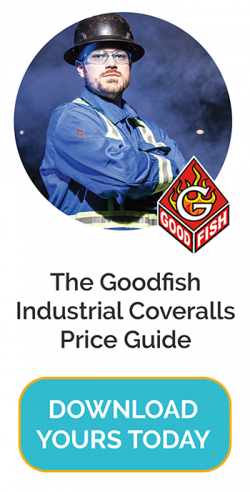Starting a business is the easy part; staying in business for years, decades even, is what is challenging. With over four decades under our belt and still going strong, we believe strongly that it is all the effort that we put in daily, and the commitment to our mission that has helped us get here. Despite the expansions that we have seen over the years, we have not strayed from the aim of our mission that is to build a solid economic foundation for the aboriginal people of Goodfish Lake. Following the basics of business—not overlooking the small things, understanding and meeting the needs of clients, sticking to core values, appointing the right people for the job and treating them the right way—is the secret to our success. Another important element that has contributed to Goodfish staying strong in business has been the great relationship that we have with the community we live in. We at Goodfish Lake Business Corporation (GFLBC), believe that investing in the community we are a part of, and giving back to those who have been with us through the good and the bad, is essential to nurturing connection. That’s why half of all our profits are invested into three trusts for the Nation, and our local employment for the community totals over $4 million dollars in wages. We expect this figure to increase from year to year as we continue staying strong in business. Vivian Jackson who has been with GFLBC for over three decades says, “First of all, this job brings stability to the people in the community and if need be, there’s a daycare just around the corner. Secondly, it helped me provide for my family for 34 years and thirdly, it provides a job for the community members.” Our employees recognize the value that we add to their lives as well as the job experience that enables them to climb the ladder of success gradually. Take for example, Calvin Steinhauer, Director of Operations, Laundry and Dry Cleaning Division. Having started off as a general manager of dry cleaning a year and a half ago, he reiterates the value-addition aspect of being a GFLBC employee. “The effect the organization has is quite large since we employ about 150 people full-time in the community. It helps put food on their tables, keeps them close to home, and also helps them transition from working with us and then be able to work off the reserve as well. It’s a good opportunity, a place to get a head start to be able to leave the community and work off the reserve,” says Steinhauer. Our employees take pride in their work and are happy to stay close to home. As far as employment prospects for the community are concerned, Ron Jackson, a longtime employee of GFLBC sums it up aptly. “I have been employed for 25 years with this company and the company has benefited the community in a lot of ways; employment-wise and even the whole area is impacted. It’s employed generations, it’s been in business for decades. We pride ourselves on our quality of work here and that’s why I think we are still going,” he says. The period from 2015-2018 saw us with 264 employees with not a single person laid off despite the downturn. Brandon Whitford, Customer Service Assistant for Transportation and Logistics, says, “this company has benefited me in a big way because I started as a regular laborer and worked my way up through supervisor transportation. My job is close to home and it is a great environment.” We do everything possible to ensure the continued education and training of our employees, and try to provide them with a support system that enables them to give their best every day. This year, 30 of our employees will be taking part in the 12 module Dale Carnegie training program on effective communication and HR. Another employee will be pursuing a certificate program at the University of Alberta. Along with all these reasons that have helped us stay strong in business for decades, we have also managed to remain an enterprise that is wholly owned and operated by the aboriginal community. Lastly but not least of all, we believe that seeking employee and community feedback and (acting upon this information accordingly) is the best way to improve ourselves in order to keep moving ahead for decades to come.
Giving Back
Adding Value
Providing Employment
Employee Retention
Education and Training
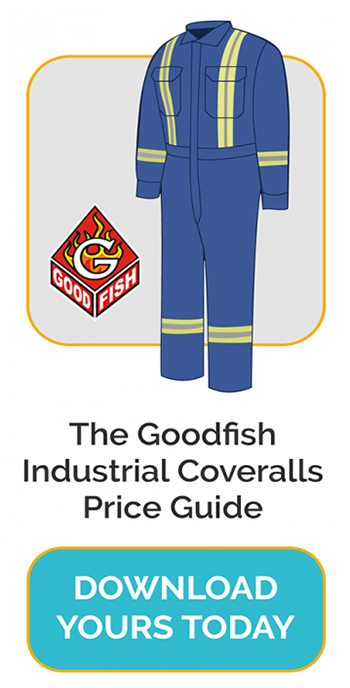
Category: Uncategorized
High-Visibility Clothing Standards and Regulations: Everything You Need To Know In 2018/2019

High-Visibility Clothing Standards and Regulations: Everything You Need To Know In 2018/2019
High-visibility clothing, also known as high-visibility safety apparel (HVSA), is worn by workers in various sectors to ensure that people are aware of their presence at a particular spot. It is usually worn when there are low light or poor visibility conditions at the workplace and at hazardous work sites such as mines, oil rigs, gas plants, construction sites, and the like. The global HVSA market was valued at US$ 1415.1 million in 2017 and is expected to grow at a CAGR of 6.1% till 2025.
Purpose of High-Visibility Clothing
Injuries and fatalities have occurred at a good number of workplaces due to objects or equipment coming in contact with the workers particularly under poor visibility conditions. This is where high-visibility apparel can help by making it easy for workers to be spotted by others especially motorists on the road and equipment operators during day as well as night. This protects their health and safety while they go about their jobs.
Bright, fluorescent colors are easily spotted by the human eye. When there is a significant contrast between the clothing and the environment that the worker is located in, it is easier to see the individual. Wearing high-visibility headwear in addition to such apparel can further enhance the safety aspect.

High-Visibility Clothing Regulations and Standards
The Canadian Standards Association (CSA) provides two different standards for high visibility clothing. While the CSA Standard Z96-09 relates to design and manufacture of such clothing, CSA Standard Z96.15 sets guidelines for selection, use, and care of such apparel. Both these standards are considered industry best practice for workers engaged in employment on surface during daylight hours.
For those working underground or from sunset to sunrise, Regulation 854 is applicable. This regulation is similar to the CSA standard but is a little more restrictive. Reputed manufacturers and dry cleaners of protective clothing such as Goodfish diligently adhere to these high-visibility clothing regulations and standards to ensure the safety of all who use the apparel.
Classification of High-Visibility Clothing
There are three classes of high-visibility apparel based on their retro-reflective properties, the colour and luminosity of the background material, and the kind of coverage to be provided by the high-visibility components.
- Class 1 gives good visibility with the lowest required coverage
- Class 2 offers superior visibility with moderate coverage
- Class 3 affords maximum coverage and visibility in low light conditions
CSA Z96-15 High-Visibility Safety Apparel Standard specifies the type of color of the background as well as that of the stripes or bands required for all classes. Fluorescent yellow-green, fluorescent red or fluorescent orange-red, bright orange-red, or bright yellow-green, are recommended for background materials. Stripes and bands on the apparel should also meet these CSA criteria:
- A horizontal band or stripe at the waist level that goes around the apparel
- A symmetrical ‘X’ on the back from shoulders to the waist
- A pair of vertical stripes on the front extending down shoulders to waist
- Bands or stripes encircling both legs and arms are essential when it comes to Class 3 clothing
Who Needs to Use High Visibility Clothing?
According to the CSA Standard, it is essential to perform a hazard assessment at the job site to get an estimation of all known or possible dangers to workers while engaged in their duties. The type of work being done, possibility of being exposed to flames or heat, whether it is indoors or outdoors, temperature, presence of traffic or vehicles are all factors that will figure in this assessment. Following the assessment the employer is required to put in place various appropriate controls. High-visibility clothing is considered the last line of defense against accidents. Emergency responders, workers who have to be underground and surface workers who have to work in low light conditions or at night, should be issued such clothing. Workers involved in industries that involve electrical hazards or gas and oil applications are likely to need garments with flame-resistant properties besides high visibility.
George Swartz, retired director of safety and occupational health, Midas International, Itasca, Illinois, says that employers need to put some thought into determining the appropriate protective clothing for workers. “They’ve got to think a little deeper into the process so they know whether they need this reflective clothing,” he said.
When you purchase high-visibility clothing, it is suggested that you seek proof that indicates the materials used as well as the design are in accordance with the CSA-Z96-15 Standard. Also, it is essential that workers be trained in the proper care and use of this specialized apparel.

The Ultimate Guide to Expert FR Coverall Maintenance
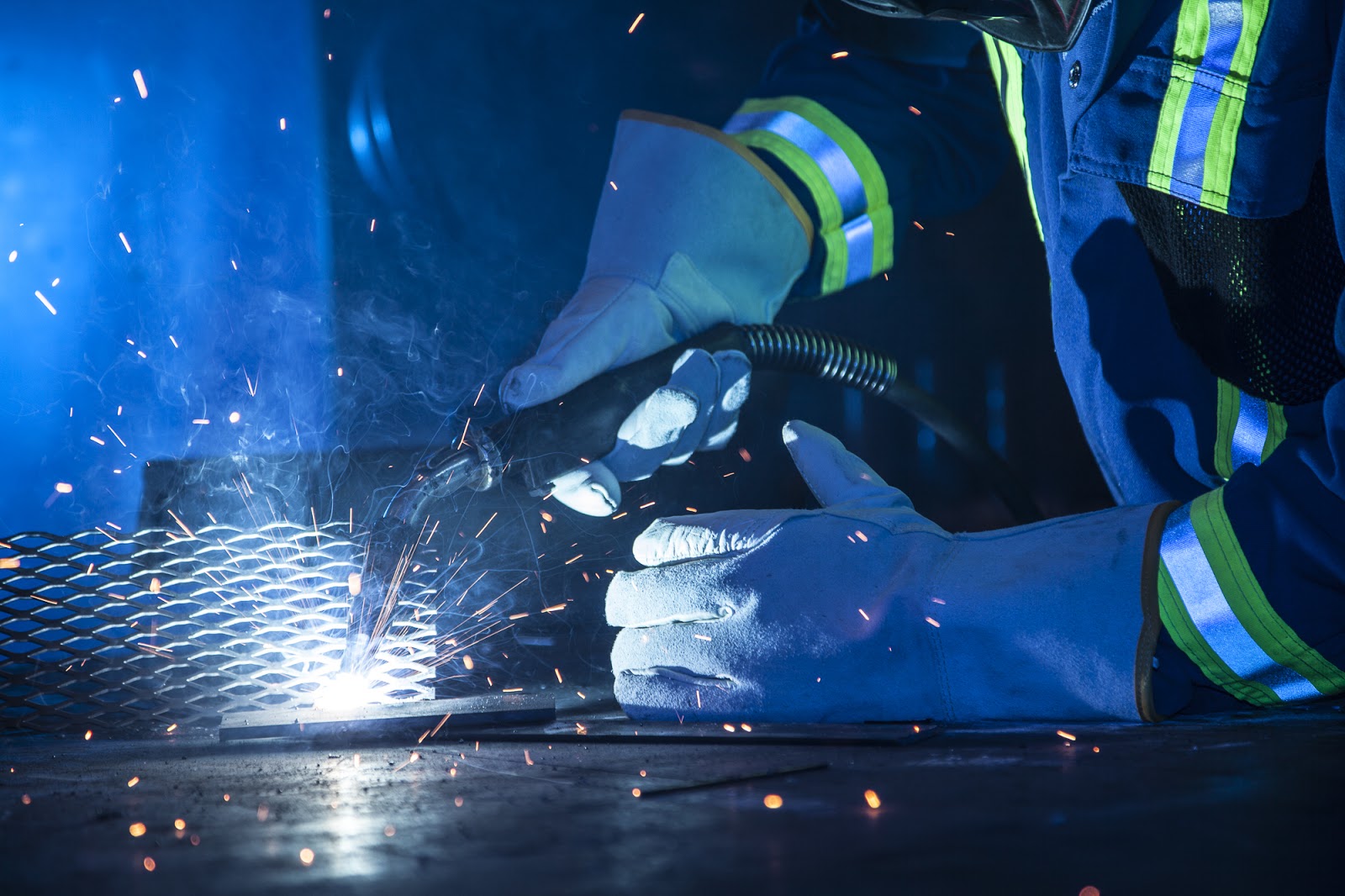
The Ultimate Guide to Expert FR Coverall Maintenance
With the implementation of the new regulatory system in the Alberta oil and gas industry, fresh projects are likely to be put on the fast track to approval. Seen as a significant step in the modernization of industry practices, this move is expected to result in direct savings amounting to $600 million annually by 2021.
This is also likely to translate into more business opportunities and jobs in the region underscoring the need to put your company at the forefront of this changing scenario. As a result, providing a safe work environment for employees also assumes greater significance. While it is true that flame-resistant (FR) clothing is an integral component of your organization’s safety program, simply ensuring that your employees wear protective gear does not absolve you of further responsibilities. FR clothing such as coveralls are most effective as a preventive measure when properly selected, used the right way, and maintained well.
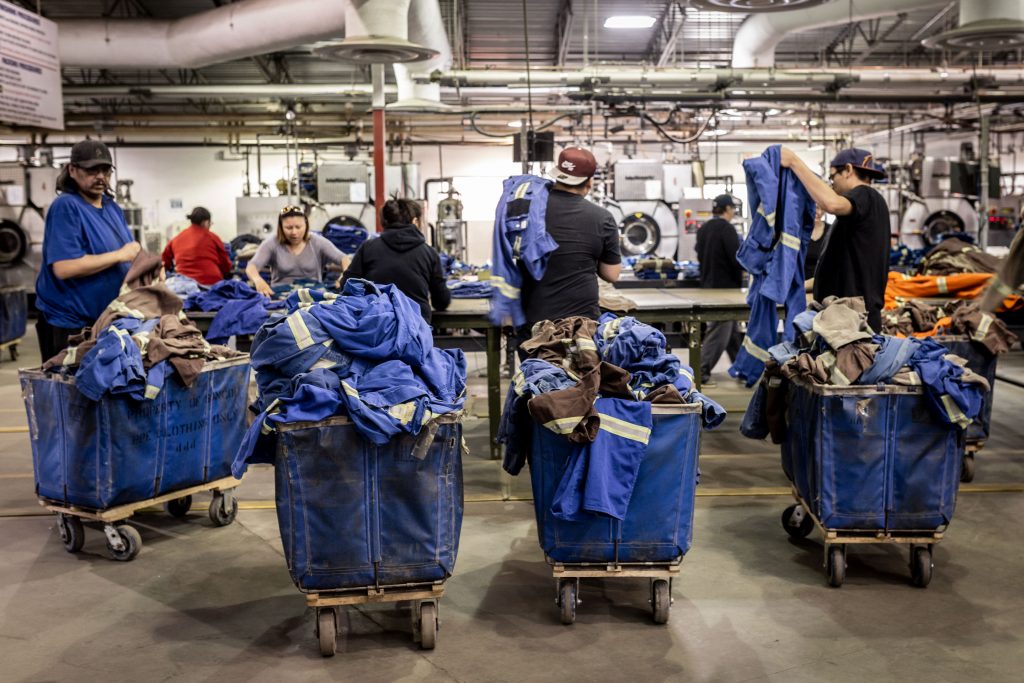
The Right Care for FR Coveralls
When the quality of FR clothing deteriorates due to improper maintenance or as a result of being worn out, it can compromise the safety of the wearers and put them at risk of fire hazards. The right type of maintenance can also significantly extend the life of your FR clothing, thus sparing you the cost of purchasing new coveralls frequently. As Benjamin Franklin aptly phrased it, “Beware of little expenses; a small leak will sink a great ship.”
Encouraging your employees to hang up these coveralls when not in use is just as essential as having them laundered the right way. Make it a point to remember the following in your attempts to ensure optimal efficiency of FR clothing.
Clean Regularly
It is advisable to clean FR apparel before using it for the first time. Every wash must be in accordance with manufacturer’s instructions. Frequent cleaning can help prevent the accumulation of hydrocarbons.
Watch For Foul Smells
Just because an FR coverall looks stained, it does not mean that it is unsafe. However, if the coveralls smell of fuel – stained or not, it indicates the presence of a possibly combustible substance. In this instance, it is essential to wash the garment till the odor is washed off. The earlier the soiled garment is washed, the better it is.
Avoid Certain Products
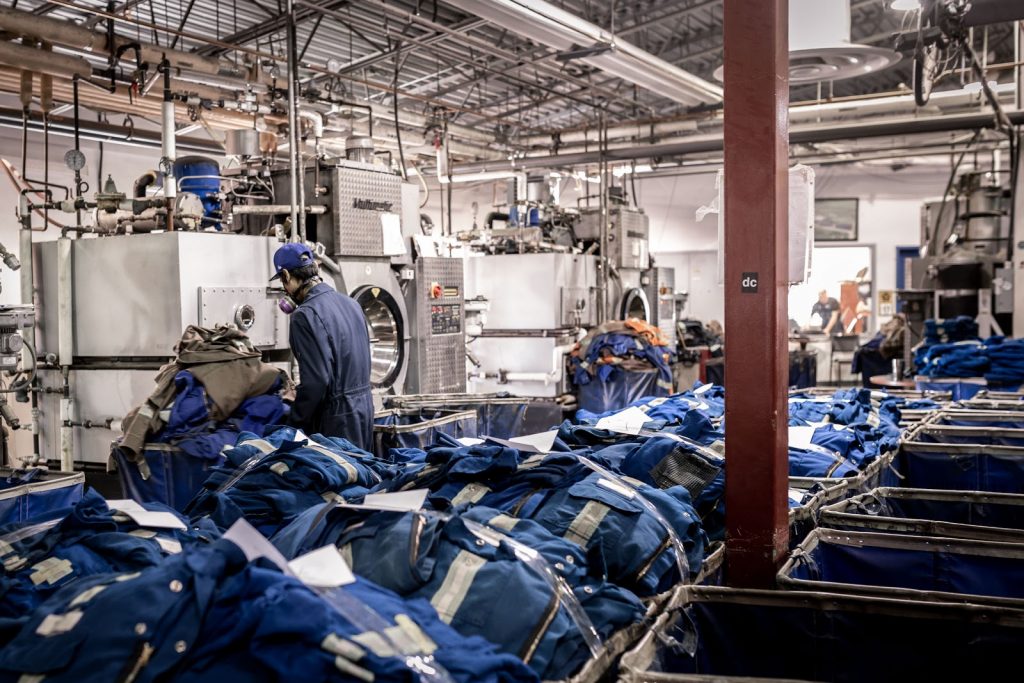
Never make use of peroxide or bleach to wash an FR coverall. These can cause harm to the fabric even if used as an additive to detergent. Fabric softeners, insect repellents with a DEET-base, and starch are all best avoided as they can lead to buildup on the surface of garment fibers.
Seek Professional Help
Getting your FR coveralls cleaned professionally is a good way of ensuring that the efficiency of the fabric is not compromised in any way. Organizations such as Goodfish that offer specialized dry cleaning for work wear in the oil and gas industry use the latest technology to facilitate their large scale commercial laundry programs. These methods successfully eliminate hydrocarbons present on protective clothing without reducing its flame-resistance in any way.
Engage in Regular Inspection
It is essential to check every FR coverall regularly for any signs of wear and tear. At the first such indication, it is advisable to repair it or replace it. Some manufacturers might also indicate the service life of your industrial FR workwear. If your coveralls are past this suggested date, then it might be best to discard them and invest in new ones. Most clothing manufacturers suggest replacing coveralls that are threadbare, frayed, or ripped.
Repairs are a Must
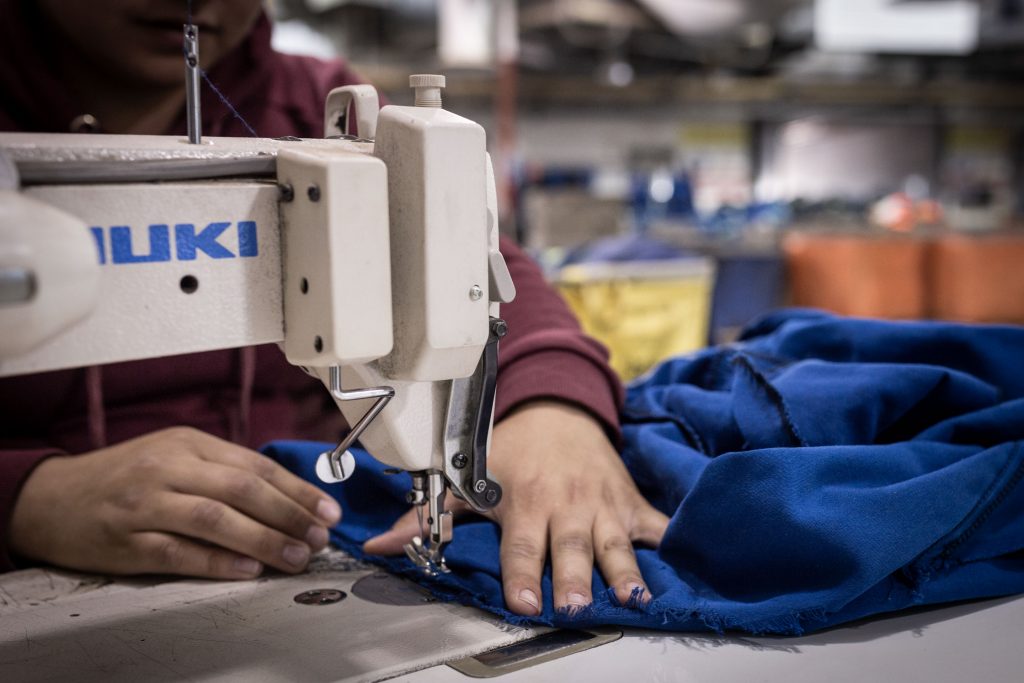
The slightest of cuts, tears, and holes can cause a decline in the FR properties of the fabric. If repairs are possible, such as a rip not greater than three inches or a hole smaller than a quarter, these should be in accordance with manufacturer guidelines. FR thread as well as various FR components such as zippers, buttons or patches from the same type of material as the coveralls, must be used in the repair process. Ideally, you should get the repairs done at an authorized facility or send it to the manufacturer for the purpose.
Besides adherence to industry standards and adoption of best practices as regards fire safety at the workplace, it is important to provide your employees training in proper use of the clothing. By making sure that the protective clothing worn by your employers is not damaged in any way, you can help prevent tragedies such as burn injuries from occurring at the workplace.

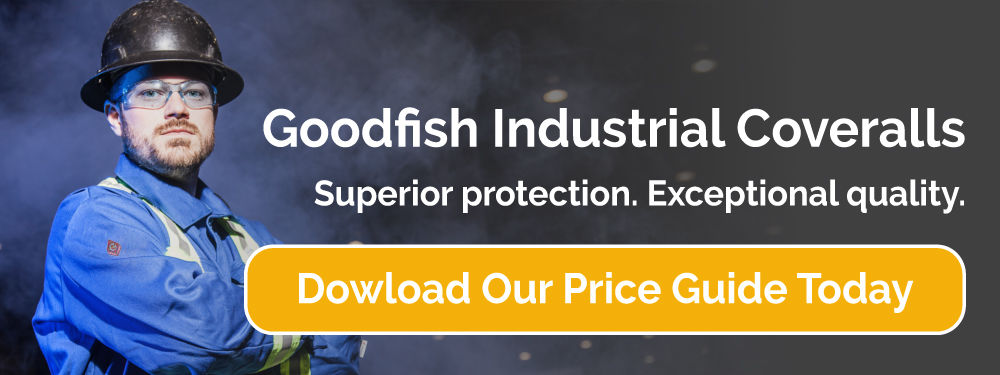
7 Points to Consider when Purchasing FR Coveralls

7 Points to Consider when Purchasing FR Coveralls
A recent study by Toronto-based eCompliance, a software company, indicates that the greater the involvement of workers in safety at their workplace, the better the safety performance. Safety concerns are a priority at most workplaces with dangerous conditions such as the oil, petroleum, natural gas, coal, and minerals industries, utilities, and food processing plants. There is a need for different types of protective gear including clothing with flame-resistant (FR) properties to safeguard them from the dangers of flash fires, arc flashes and more.
So, here are some factors to consider before you dive in and purchase FR coveralls to ensure you’re making the right choice:
Regulatory Requirements
Various non-profit organizations, as well as government bodies, issue guidelines for protective clothing to be worn by workers in hazardous occupations. The Canadian General Standards Board (CGSB), and the Canadian Association of Petroleum Producers (CAPP), are two such regulators who specify standards for FR clothing intended for the petroleum, oil, and natural gas industry. It is important to keep these specifications in mind when you buy FR coveralls.
What are your Hazards ? Flash Fire, Arc Flash, Hot Liquids
It is of out most importance that you take the time to understand the hazards your employees face on a day to day basis. Though quite similar, FR Fabrics have different properties that offer different levels of durability and protection. Make sure your coverall supplier offers solutions for your work environment. Coveralls options for industrial usage, such as the ones produced by Goodfish, are not only flame-resistant, they also offer protection from arc flash. If you are in a hot fluid situation we would love to hear from you as well to discuss your option
Material Used
Some types of materials are naturally resistant to flames and do not have to be subjected to chemical treatment. Silk and wool are two classic examples of such fibers. The tighter the weave of the wool, the greater are its FR properties.
While nylon and polyester are difficult to ignite, they do melt upon catching fire. Meanwhile, linen and cotton tend to catch fire easily, but can be chemically treated to extinguish flames. Modacrylic, Kevlar, and Nomex are some fibers that possess flame-resistance thus, making them a suitable choice for such apparel.
Alt-text: Some essential factors need to be considered before you buy FR coveralls such as those worn by the workers here.
Durability
Nothing lasts forever, and neither will FR coveralls. However, these are not items that you want to or can afford to keep purchasing on a frequent basis. So, look for clothing that is durable and can withstand the rigors of the oil and gas sector. The average lifetime of FR clothing can be anywhere from nine months to five years depending on the frequency of use, the material, and the cleaning process it goes through.
Comfort
It is important that your workers stay comfortable while wearing protective clothing. While there was a time when choices were limited when it came to FR clothing, this is not the case today. The high quality materials used by reputed brands in the FR clothing segment ensure comfort with safety. This makes it necessary to look at a good brand along with the appropriate size and material when it is time to buy FR coveralls.
The Fit
With FR clothing, a looser fit is thought to offer better protection because it provides an extra layer of air between the wearer and the garment. This insures added insulation against flames or heat in the event of a fire accident. Tight clothes can bring the fire into immediate contact with skin. It is essential to look for coveralls that are not too loose either because these can snag on equipment or other objects in the work zone which can prove dangerous.
Maintenance Required
The right type of care and maintenance is essential not only to ensure the longevity of FR clothing. Not doing this can strip the clothing of its FR properties and thus, make them less effective in hazardous environments. Special laundering is required to ensure that this does not happen and you get the best use out of FR clothing. So maintenance costs will have to be factored in while making your choice.
Using the right type of FR coveralls best suited for your area of operations is critical to the safety and well-being of your employees. Knowing the kind of risks involved in your industry and being aware of the necessary safety regulations can help you in this. Being armed with knowledge about the types of fabrics used in FR coveralls, the kind of maintenance necessary, and following safety standards ensures that you are doing your best to safeguard your employees.
Goodfish is armed with everything you need to maintain and guarantee that your FR coveralls will last and thrive in your work environment. Find out more today.

Keeping Protective Clothing Clean: Goodfish Dry Cleaning and Coveralls in the Oil and Gas Industry

Save time and money by consolidating your Coveralls, Accessories, Laundry, and Drycleaning
You’re a purchaser or supervisor at an Alberta industrial company, looking for a stress-free workwear solution for a large workforce, and you’ve somehow landed on us, Goodfish Lake Business Corporation.
The global demand for oil is expected to touch 100 million bpd soon. In keeping with this, oil production in Alberta, Canada’s energy province, has increased 16.5% in May 2018 from a year ago, indicating a rebound after the crash of 2014. According to the Canadian Association of Petroleum Producers, the Canadian oil supply is expected to grow by 1.4 million bpd and reach 5.6 million bpd by 2035.
Besides oil, an abundance of natural gas, coal, and minerals makes the province a great opportunity for companies that pursue extraction and processing of these energy resources. With large numbers of employees involved in the industry, it becomes essential that the companies ensure the safety of workers to the best possible extent. As part of this, regulatory bodies like the Canadian Association of Petroleum Producers (CAPP) and Canadian General Standards Board (CGSB) mandate the use of protective clothing adhering to specific standards for workers in such hazardous conditions.
Why Use Protective Clothing?
Flash fires are a major hazard in this industry due to accidental release and ignition of flammable materials that may be in gaseous or liquid forms. A three second flash fire can generate temperatures ranging from 538° Celsius to 1038° Celsius which can result in severe burns to workers if they are not wearing appropriate flame-resistant clothing. This is because the worker will be doubly exposed to heat—the heat from the fireball as well as the heat of the burning fabric. The heat generated by the burning fabric will be determined by the composition of the material including factors such as whether it is treated or not, the weight of the fabric, the weave, and the cleanliness of the garment. This is why maintenance of protective clothing assumes immense significance.
Maintenance of Protective Clothing

A garment that is soiled will have hydrocarbons present and this can seriously compromise the effectiveness of the protective garment. Protective clothing needs to be maintained in a way that eliminates hydrocarbons without reducing the flame-resistant properties of the fabric in any way. Large scale commercial laundry programs can do this by using the latest technology available. Flame-resistant (FR) clothing should not be washed with other types of fabrics and chlorine bleach can also prove detrimental to its proper functioning. Specialized dry cleaning for industrial work wear like what Goodfish specializes in is the best option when it comes to maintenance of protective clothing used in the oil and gas industry.
Andrew Wirts, sales and marketing director with NASCO, a rainwear manufacturer based in Washington, Indiana, concurs with this. “When a garment gets contaminated with hydrocarbons that are flammable, it’s very counterproductive to the FR characteristics. So it’s important to maintain FR garments properly, in a way that removes hydrocarbons without diminishing the fabric’s FR effectiveness. “
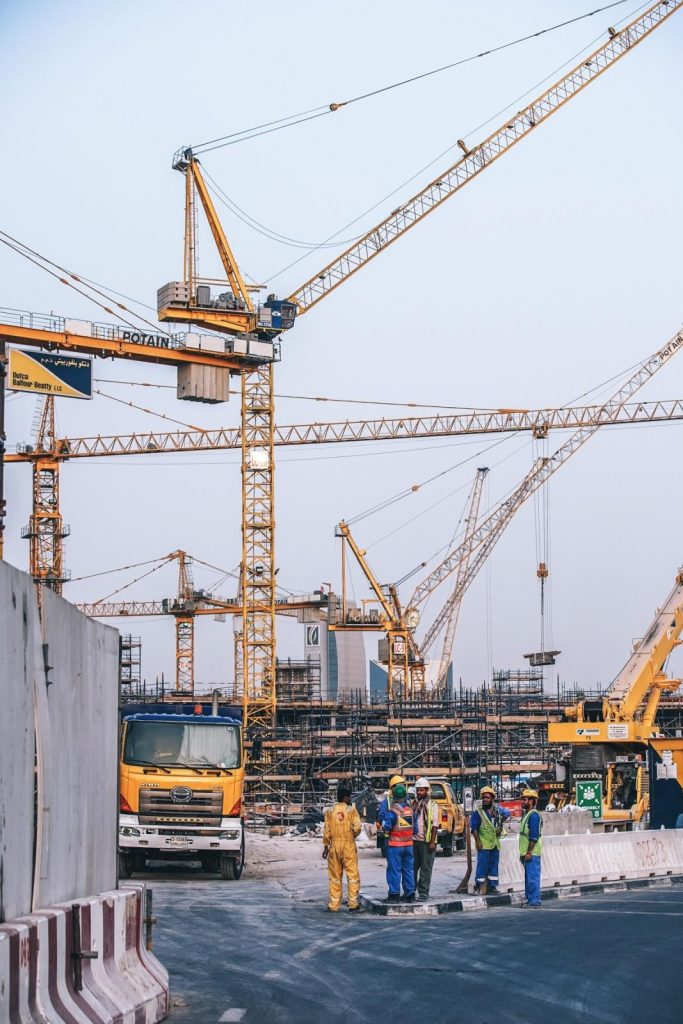
Source: Photo by Fancycrave on Unsplash
Goodfish Dry Cleaning Effectiveness for Removing Hydrocarbons
We understand the unique hazards that your employees face in their field of work. The state-of-the-art industrial dry cleaning technology used by Goodfish is effective in extracting about 99.9% of hydrocarbons from every garment. All the hydrocarbons extracted in this manner, which comes to around 100 barrels annually, are retrieved by a specialized company for processing, ensuring that we are doing our bit for the environment. Every customer’s garments are cleaned separately and not combined with garments of others to provide you with the best maintenance of protective clothing.
Research Proves Effectiveness
In collaboration with the Alberta Research Council and the University of Alberta, we have conducted research to show the numerous safety and environmental benefits of our dry cleaning method at completely removing hydrocarbons from FR Fabrics. The study proved that drycleaning is the best method for protecting employees against oil based soils.
The coveralls used in the study were visually evaluated for cleanliness and tested for residues before and after cleaning. The study included fabric materials FR cotton and Aramid. The primary aspects this study focused on are:
- Safety — The superior dry cleaning method that we use effectively removes all hydrocarbons from the coveralls without any adverse impact on the fabric. Instead, it extends the longevity of the material without compromising on the flame resistance of the material or its thermal protective properties. The thermal protective properties of the materials used in the study remained relatively unchanged even after repeated use and dry cleaning cycles (more than 25). The change noticed after one dry cleaning was less than one percent for all dimensions and fabric types.
- Eco-friendliness — Since our dry cleaning process uses a waterless system the environmental impact is minimal even when cleaning oily workwear. Despite the lack of water, all the oily contamination was effectively removed from the sample coveralls.
Burn injuries can result in devastating consequences in the oil and gas industry. However, you can do your best to minimize the risk of such accidents by adopting safe work practices as well as providing your employees with an effective FR clothing program. Safety, durability, comfort, and cost will all feature in your decision-making process when it comes to protective work clothing.

How To Get Started With Goodfish
The right choice for Industrial garments in Alberta

Save time and money by consolidating your Coveralls, Accessories, Laundry, and Drycleaning
You’re a purchaser or supervisor at an Alberta industrial company, looking for a stress-free workwear solution for a large workforce, and you’ve somehow landed on us, Goodfish Lake Business Corporation.
We understand.
You’ve got questions:
Why Goodfish?
What do they offer that I can’t get elsewhere?
What kind of quality workwear do they sell? Do I have to look elsewhere for laundry, branding, and repairs?
If any of this sounds remotely like you, you’ve come to the right place. Here’s what you’ll need to know to get started with GLBC.
Who is Alberta’s Goodfish Lake Business Corporation?
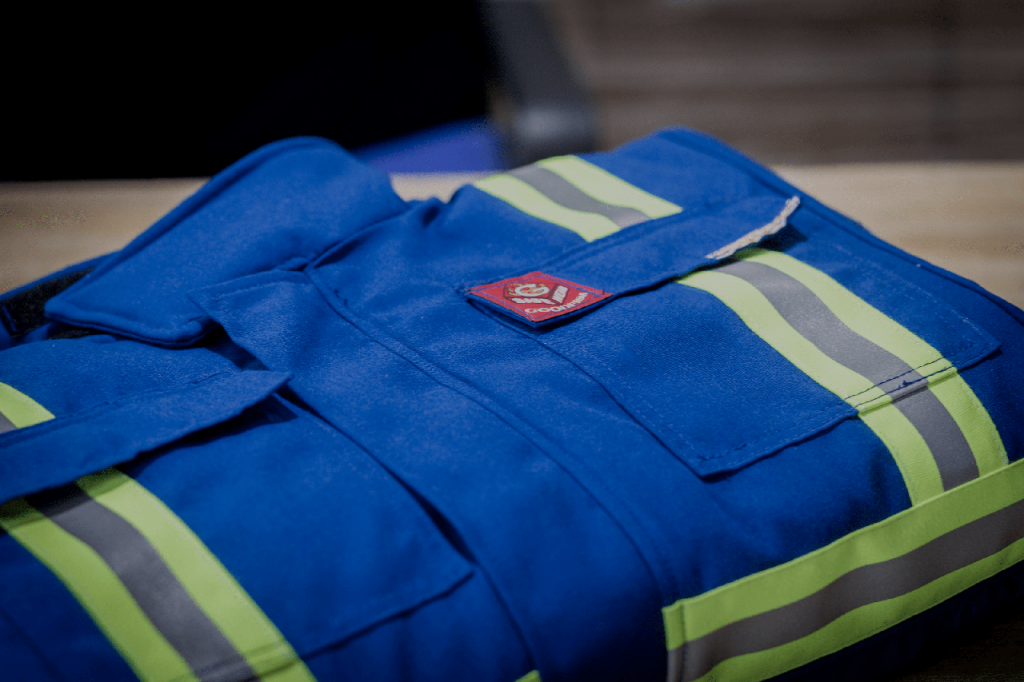
In 1977, Chief Sam Bull had the foresight to recognize the growing force of the Alberta oil and gas industry and, along with the economic development committee, created the Goodfish Lake Business Corporation (GFLBC), an industrial dry cleaning and laundry facility in Goodfish Lake.
Soon after, in 1980, it started its own industrial garment division and then, in 1989, expanded its manufacturing facility to 10,000 sq. ft. 2005 saw another new 17,000 sq. ft. dry cleaning and laundry facility and in 2007, they became the first Aboriginal business to obtain an ISO 14001 certification. The industrial laundry facility moved to Edmonton in 2013, and will now soon be moving to Lac La Biche to become closer to our existing customer base in the summer of 2018.
But, over the years, we haven’t strayed from our overall mission, which is to build a strong economic foundation for the aboriginal people of Goodfish Lake, while creating local prosperity and protecting the environment.
That’s why GFLBC still remains, to this day, 100% aboriginally owned and operated, with profits breaking down in the following way: 50% community infrastructure, 10% education endowment, and 40% business growth.
How else does GFLBC support the Whitefish First Nation?
During 2015-2018, we employed 264 employees, with not a single laid off during the downturn.
In 2018, 30 of our employees will participate in a twelve module Dale Carnegie training program on effective communication and HR, and one will begin a certificate program at the UofA.
Our annual donations to the local community is approximately $21,485, with a 2018 commitment that will make it the biggest year yet.
Should you partner with GFLBC, it would provide you with much-needed Aboriginal spend in a risk-free capacity.
Why is Goodfish Lake a good business fit?
Simply put, we provide an all-in-one destination for your industrial garment and workwear needs, including manufacturing, industrial dry cleaning, industrial and commercial laundry, workwear repairs, sourcing and branding, at unparalleled quality, safety, reliability.
We’ve got the experience
Our 17,000 sq. ft. facility cleans about one million items annually, capturing and recycling enough hydrocarbons to fill 250 barrels of oil.
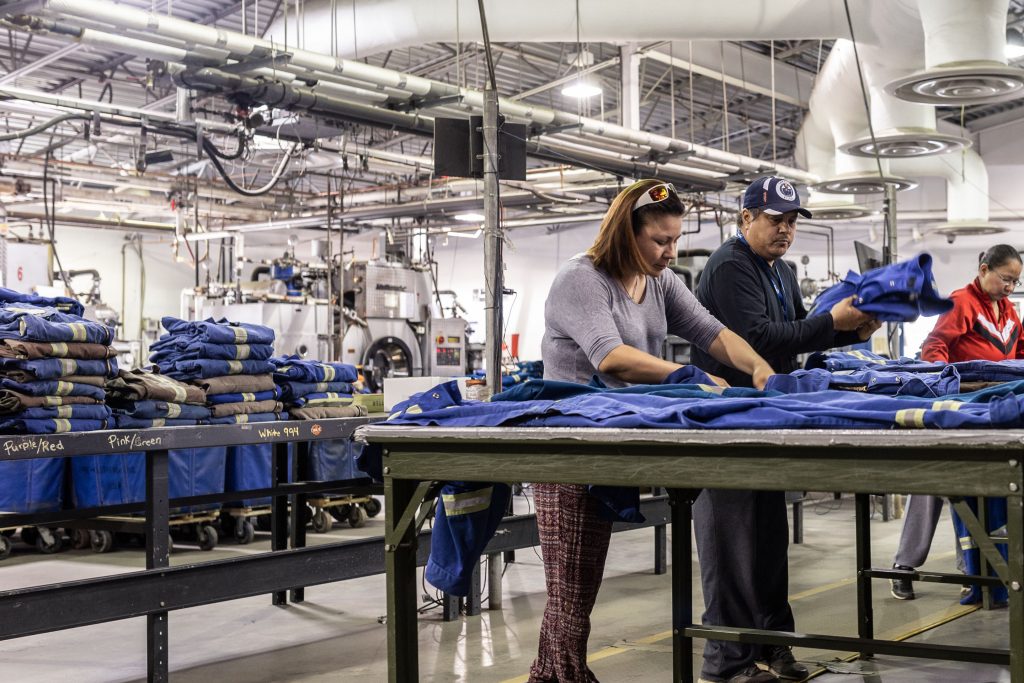
We’ve put our method to the test
We wanted to determine, as a fact, what we all believed in our hearts — that we have the highest-quality product on the market, and a superior cleaning method. How did we do that? We completed a study with the University of Alberta to determine the effectiveness of our dry cleaning method and the quality of our coveralls.
The results? Our superior dry cleaning method was proven to effectively strip all soil from the garments without compromising the fabric, and create more longevity of the coveralls, all while upholding both the flame resistance or thermal protective properties of the coveralls tested. The environmental and safety benefits of dry cleaning coveralls versus wet wash that our competitors provide is unmatched.
We specialize in dry cleaning all types of industrial workwear, and we protect the environment while doing so too. Since our dry cleaning is a waterless system, there is much less environmental impact when cleaning oily workwear.
We have the safest product on the market
We have a saying about our products, which goes, “Goodfish is the right choice when lives are on the line.”
But it’s not just a saying. We have a customer who experienced a harrowing close call, but, as his story goes, he had our coveralls to thank for his life.
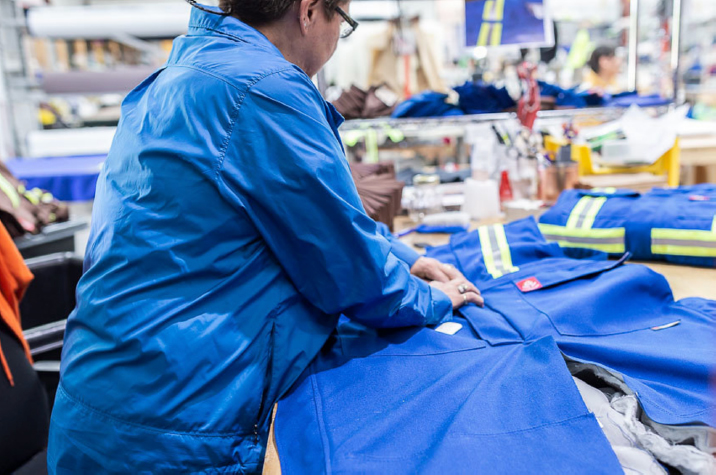
“Wearing Goodfish Lake coveralls saved my life.”
— Randy Burton, Safety Specialist
Our safety standards meet or exceed a range of high-risk workers, including electricians, utility, oil refinery, petrochemical and construction workers. They also provide flash-fire protection, electric arc flash protection, and high visibility.
So, if any of this sounds appealing to you, and you’d like to get started with Goodfish Lake, check out our pricing below.
We’ve left everything as transparent as possible.



 Your privacy is important to us, and we are committed to protecting your personal information.
Your privacy is important to us, and we are committed to protecting your personal information.